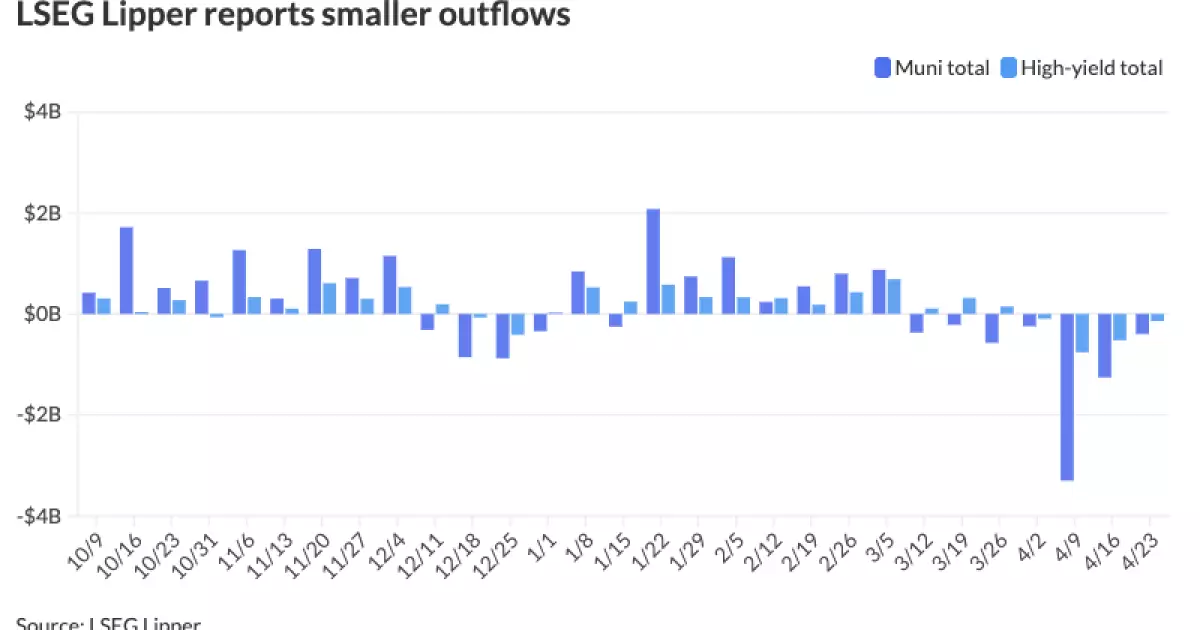The municipal bond market has been experiencing a rollercoaster of volatility, which mirrors broader economic indicators such as U.S. Treasury yields and the stock market. Recent trends show that while municipal bond mutual funds have seen outflows, there are signs indicating a potential stabilization and recovery in the market. This upheaval is rooted in a complex interplay of market forces, including investor sentiment and macroeconomic policy that reflects on future prospects for municipal bonds.
U.S. Treasury yields, which influence municipal yield rates, have recently seen a decline. This downward trend, coupled with the general rate of equity market performance, suggests that investors are recalibrating their strategies in the wake of economic signals. In the world of municipal bonds, slight hikes in yields over recent trading days—spanning as much as seven basis points—demonstrate that while there’s a semblance of firmness, underlying challenges still loom large.
The Role of Supply and Demand Dynamics
A key challenge for the municipal bond market resides in the ongoing tension of supply versus demand. BlackRock strategists pointed out that despite recent support from the stability in U.S. equity markets and Federal Reserve leadership, a “headwind” remains due to supply-and-demand dynamics. As investors have pulled substantial funds from municipal bond mutual funds—totaling outflows reaching nearly $400 million—there’s a stark juxtaposition to the inflow observed in tax-exempt municipal money market funds, which garnered over $2.5 billion.
This dissonance highlights an essential truth: investor sentiment in the municipal bond space can often pivot dramatically based on external economic news. In particular, the heightened uncertainty in sectors like tax law changes and the broader implications of ongoing U.S.-China trade negotiations exacerbate this volatility. Investors showcasing caution may shy away from new municipal offerings, spurred by fears of market adjustments ahead.
Market Insights and Robust Opportunities
While the current landscape appears fraught with unpredictability, astute investors may uncover robust opportunities amid these strains. For example, last week’s pricing for large state general obligation bonds saw yield reductions, suggesting potential buyers still see value in the right conditions. The yields for Massachusetts’ offerings—five basis points lower than recent months—evince a competitive edge that investors seem willing to capitalize on.
Furthermore, secondary market trading trends show that certain allocation themes are indeed in play. The trading patterns suggest targeted investor interest in specific maturities which imply confidence among participants in the market, despite the backdrop of general caution. The ability to identify where the market is coiling for recovery possesses strategic value, an essential skill for those wishing to endure unsteady economic climates.
Impact of Tariff Policy on Market Sentiment
An interesting layer to this situation is the recent announcement regarding the 90-day pause on reciprocal tariffs, notably those imposed on China. This policy shift has been interpreted by many analysts as a stabilizing factor in risk markets, positing it as a contributor to the anticipated rebound in municipal bonds. The tariffs had caused complexity and unease, impacting investor behavior. The current pause might reflect an opening, if only momentarily, that can inform investment strategies moving forward.
It raises the question: how susceptible are municipal bonds to external economic negotiations? If investor confidence can be swayed by tariff negotiations, it suggests the need for careful monitoring and swift responsiveness in investment decision-making.
The Importance of Monitoring Fund Flows
Another important aspect of the current discussion centers around fund flows, with a notable trend towards a significant withdrawal from municipal bond mutual funds. Seven weeks of consecutive outflows suggest an alarming message from investors regarding their outlook for the asset class. On the other hand, the inflows into taxable money market funds underscore a shift in investor confidence, often signaling a flight to safety.
The dichotomy of outflows from high-yield funds, severe enough to illustrate broader market unease, reflects that municipal bonds are often viewed with skepticism during uncertain times. This perturbation necessitates a thorough understanding of fund management and portfolio construction for investors.
Investors should also be cautious in interpreting market signals, ensuring they don’t merely react but rather adopt a calculated approach in navigating these tumultuous waters. The ability to affect change through judicious fund selections may serve as a lifeline for investors looking to anchor their portfolios amid the turbulent fluctuations of the municipal bond market.
The evolution of the municipal bond sector during this challenging period highlights an undeniable truth: though steeped in uncertainty, opportunities persist for those wise enough to navigate the landscape strategically.

